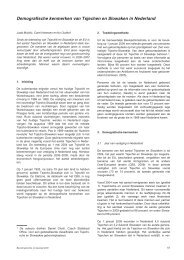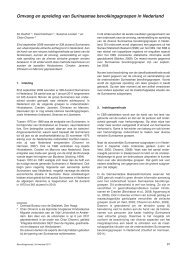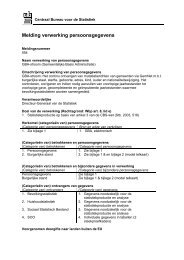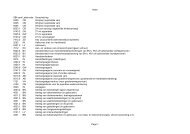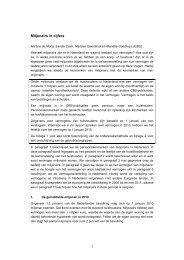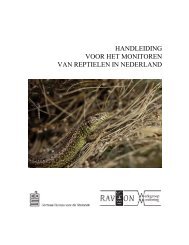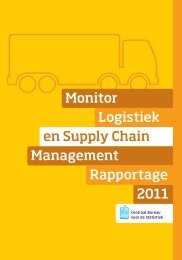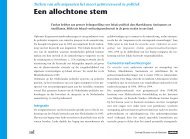Internationalisation monitor 2012 - CBS
Internationalisation monitor 2012 - CBS
Internationalisation monitor 2012 - CBS
Create successful ePaper yourself
Turn your PDF publications into a flip-book with our unique Google optimized e-Paper software.
16 Statistics Netherlands<br />
<strong>Internationalisation</strong> and enterprise dynamics– an in-depth analysis<br />
An interesting issue, but thus far not yet explored is the relationship between internationalisation<br />
and enterprise dynamics. Foreign controlled enterprises and enterprises<br />
that engage in international trade play an integral part in the Dutch economy, generating<br />
growth and employment. But at this point we know little of the dynamics behind these<br />
enterprises, the determinants of these dynamics and their effects on the economy.<br />
In chapter 6 we will explore the demography of enterprises in the Netherlands and the<br />
differences in enterprise dynamics of internationally active enterprises versus domestically<br />
oriented firms. Birth and death rates of various types of enterprises are distinguished by<br />
size class and sector. Survival analysis is carried out for a panel of enterprises to determine<br />
whether international orientation increases the life expectancy of an enterprise.<br />
We found that, even though there are far more start-ups occur under Dutch control, they<br />
often start out very small, while the relatively few foreign start-ups are on average larger<br />
in size. Both Dutch controlled firms and foreign controlled firms increased in number<br />
between 2007 and 2010; foreign controlled firms mainly due to mergers and acquisitions.<br />
We also looked at survival rates among different types of enterprises. In general, almost<br />
three out of five new firms survive at least five years. Survival rates vary by industry with<br />
construction having the greatest and retail trade the smallest survival rates. Engaging in<br />
international trade has a positive impact on firm survival, especially when an enterprise is<br />
a two-way trader. Also, enterprises that start trading right after their birth, so-called born<br />
globals, are less likely to exit than non-traders.<br />
Whether the start-up or exit of a foreign controlled firm has different implications for<br />
the Dutch economy, e.g. in terms of employment or turnover, compared to such an event<br />
for a Dutch controlled enterprises is the topic of chapter 7. When we compare a foreign<br />
controlled start-up to a similar Dutch start-up (in terms of size, economic activity, trade<br />
status and turnover) it turns out that they have on average similar growth paths. As far<br />
as exits are concerned, more employment was destroyed at foreign controlled enterprises<br />
than at similar domestic controlled enterprises four years before exit. Whereas average<br />
employment was comparable in the year before exit, four years before exit the average<br />
foreign controlled exiter employed 28 persons and its Dutch controlled counterpart 13.<br />
Chapter 8 extends the analysis of chapter 6 on international traders by digging deeper into<br />
this specific population of enterprises, illustrating their economic development over time,<br />
the manner in which they grow (extensive versus intensive margin), and when they do not<br />
grow, factors that might have played a role in their survival.<br />
Most traders start and stay small. Around two thirds of new traders start with one product<br />
from/to one country. After five years, still around 70 percent of importers and exporters<br />
(conditional on survival) trade with at most 5 countries and at most 5 products. Expanding<br />
to new countries or new products is costly and brings along risk, which only the most<br />
productive and profitable firms are able to do. As a result, most growth is achieved by





